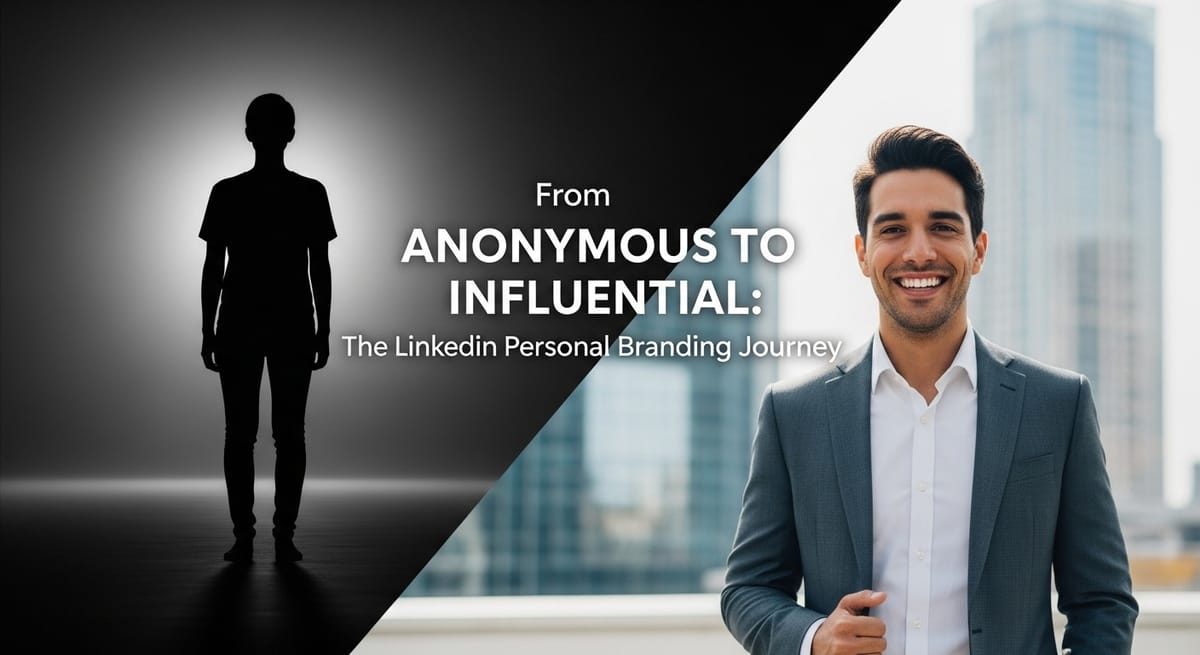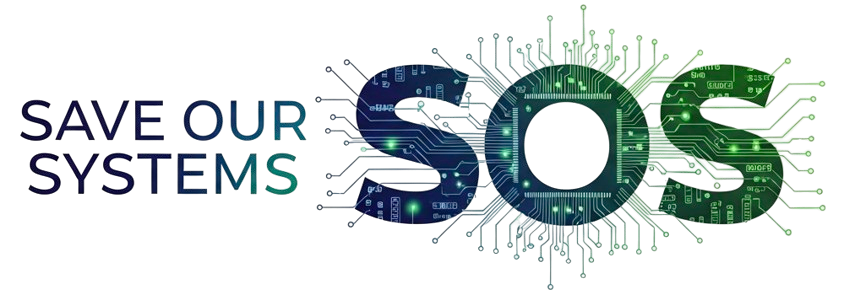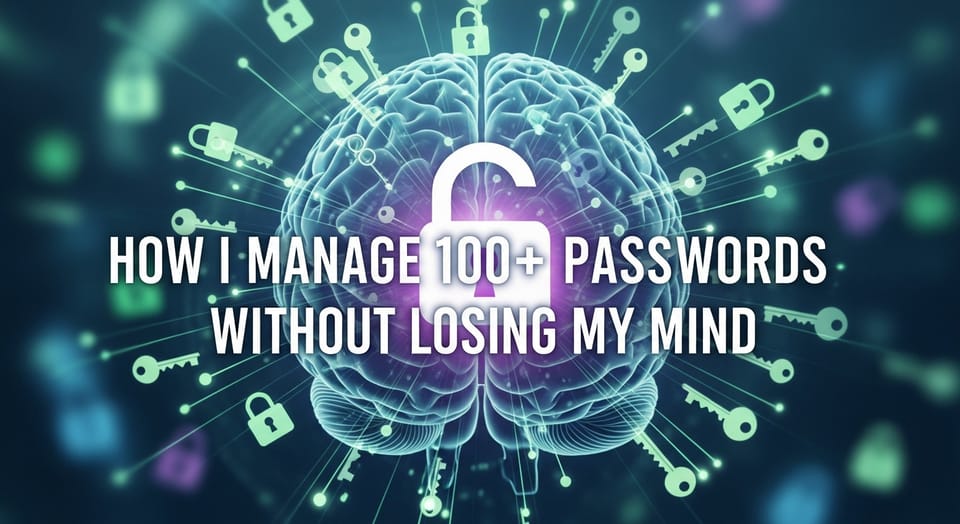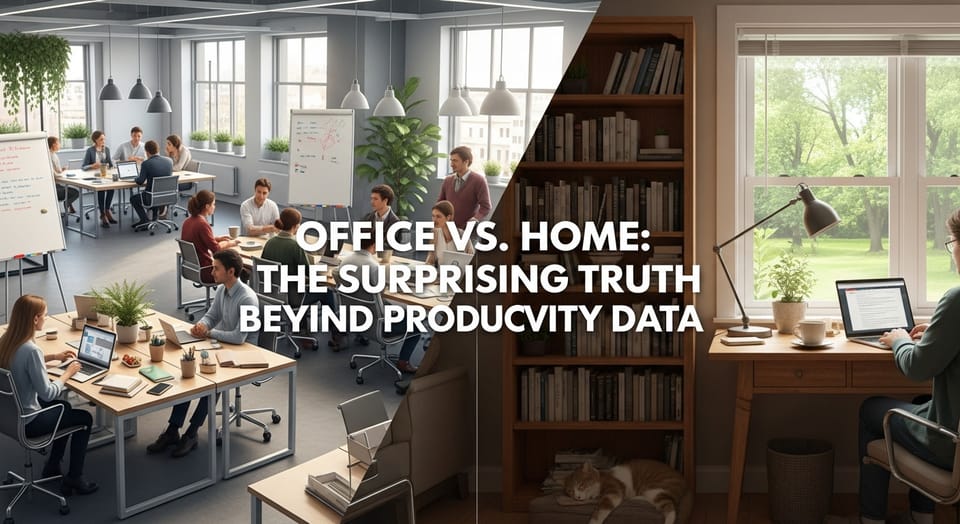From Anonymous to Influential: The LinkedIn Personal Branding Journey

In an era where career paths are increasingly non-linear and job tenure averages just 4.1 years, personal branding has emerged from the realm of entrepreneurs and executives to become essential for professionals at all levels. This transformation represents one of the most significant shifts in career development strategy of the past decade, with LinkedIn standing at the center of this evolution.
"I started my own blog because I realized how critical having your own personal brand is," notes one professional whose recent leadership training across multiple programs emphasized personal branding as a key differentiator in today's competitive landscape.
The Democratization of Personal Branding
Personal branding has undergone a remarkable transformation in recent years. What was once considered relevant only for entrepreneurs, consultants, and high-profile executives has become essential for professionals across all organizational levels. This shift reflects the changing nature of work and career development in the digital age.
Research supports this evolution with compelling data: professionals with strong personal brands experience 27% higher job satisfaction and are 38% more likely to receive promotions than those without established personal brands. Furthermore, LinkedIn profiles with complete information receive up to 40 times more opportunities than incomplete ones.
The importance of personal branding has intensified as career paths have become less linear. With the average professional now changing positions every 4.1 years, the ability to clearly communicate your value proposition has become a crucial career skill.
LinkedIn: The Premier Platform for Professional Branding
With over 900 million users globally as of 2025, LinkedIn has cemented its position as the dominant professional networking platform. Its evolution from a simple resume repository to a comprehensive content publishing, networking, and thought leadership platform makes it the ideal environment for building a personal brand.
The statistics supporting LinkedIn's importance are compelling:
- 61% of job seekers research a company's LinkedIn presence before applying
- Profiles with professional headshots receive 14 times more profile views
- 45% of hiring managers use LinkedIn as their primary screening tool before interviews
- 76% of hiring managers consider a candidate's LinkedIn presence when evaluating potential hires
These numbers highlight why LinkedIn has become the essential platform for professionals seeking to establish their personal brand and expand their career opportunities.
Leadership Development Embraces Personal Branding
The connection between leadership development and personal branding continues to strengthen. A McKinsey study found that 72% of leadership development programs now include personal branding components, while executive coaching programs increasingly focus on online presence, with 68% of Fortune 500 companies offering personal branding support for their leadership teams.
Perhaps most telling is that leadership effectiveness scores are 31% higher for executives with well-developed personal brands compared to those without, according to Leadership IQ's 2024 research.
The Anatomy of an Effective LinkedIn Personal Brand
Research identifies several critical elements that contribute to an effective personal brand on LinkedIn:
Optimized Profile Structure
A comprehensive profile with all sections completed increases visibility in LinkedIn's algorithm. Profiles with "All-Star" status appear in search results 40% more often than partial profiles. This includes a compelling headline, detailed experience sections, education, skills, and recommendations.
Strategic Keyword Implementation
Incorporating industry-specific keywords throughout a profile increases discoverability. Profiles with targeted keywords in headlines, about sections, and experience descriptions receive 60% more relevant connection requests. This requires understanding which terms recruiters and connections in your industry are searching for.
Consistent Content Strategy
Regular, valuable content establishes thought leadership. Professionals who post weekly see engagement rates 2-3 times higher than those who post monthly. Successful personal brands typically establish 3-5 content pillars aligned with their professional expertise, with consistency in these topics establishing perceived authority.
Visual Branding Elements
Consistent visual elements create recognition. Profiles with custom banners and professional headshots receive 21% more profile views. Visual consistency extends to content creation, with branded templates for documents or consistent image styles reinforcing professional identity.
Authentic Engagement Patterns
Authentic interaction builds community. Users who comment thoughtfully on others' content receive 5 times more profile views than those who only post their own content. The relationship between publishing and engaging is symbiotic, with both elements necessary for building influence.
Case Studies: Personal Branding in Action
The Marketing Manager's Transformation
A mid-level marketing manager at a Fortune 500 company transformed her LinkedIn presence through several strategic changes:
- Rewrote her headline to focus on her value proposition rather than job title
- Created a content calendar focusing on industry trends
- Engaged consistently with thought leaders in her field
- Shared behind-the-scenes insights from major projects
The results after 6 months were remarkable:
- 340% increase in profile views
- 15 speaking opportunities
- 3 job offers with 30%+ salary increases
- Internal promotion to senior leadership position
The Technical Professional's Journey
A software developer with minimal online presence implemented a strategic LinkedIn approach:
- Created content demonstrating problem-solving techniques
- Shared code snippets and practical solutions
- Documented his learning journey with new technologies
- Engaged in technical communities within LinkedIn groups
His results after 12 months demonstrated the power of consistent branding:
- Recognition as a subject matter expert in his field
- A following of 12,000+ industry peers
- Launch of a successful technical newsletter
- Consulting opportunities worth $85,000 annually
Building Your LinkedIn Personal Brand: A Practical Framework
Based on comprehensive research, here's a step-by-step approach to building influence on LinkedIn:
Foundation Stage (Weeks 1-2)
This initial phase focuses on optimizing your profile and defining your professional identity:
- Audit your current LinkedIn presence
- Define your professional value proposition
- Research successful profiles in similar roles/industries
- Optimize your profile (headline, about section, experience descriptions)
- Select professional photography
- Create a custom banner aligned with your professional brand
Content Development Stage (Weeks 3-6)
With your profile optimized, the focus shifts to content strategy:
- Define 3-5 content pillars aligned with your expertise
- Create a content calendar
- Develop your first series of posts
- Establish an engagement schedule (15-20 minutes daily)
- Join relevant groups and conversations
Growth Stage (Months 2-4)
During this phase, consistency and analysis become critical:
- Implement a consistent posting schedule
- Analyze performance metrics
- Refine your content strategy based on engagement data
- Begin proactive networking
- Offer value through comments and discussions
Influence Stage (Months 5+)
At this stage, you transition from building to leveraging your brand:
- Collaborate with other content creators
- Develop unique content formats
- Share case studies and results
- Mentor others in your industry
- Create thought leadership pieces
Content Strategy for Maximum Impact
Effective content strategies for LinkedIn personal branding typically follow established patterns:
Content Mix
The optimal content distribution follows approximately:
- 60% educational/informative content
- 25% inspirational/storytelling content
- 15% promotional content
Format Diversity
Incorporating various content formats increases reach and engagement:
- Text posts (average engagement rate: 1.2%)
- Image posts (average engagement rate: 1.8%)
- Document/PDF posts (average engagement rate: 3.1%)
- Video content (average engagement rate: 2.7%)
- Polls (average engagement rate: 4.3%)
Posting Frequency
Studies indicate 2-4 posts weekly represent the optimal frequency for engagement without audience fatigue.
Measuring Your Personal Branding Success
Successful personal branding requires measurement against clear KPIs:
Quantitative Metrics
- Profile view growth (benchmark: 15-25% quarterly increase)
- Connection growth rate (benchmark: 7-10% monthly increase)
- Content engagement rates (benchmark: industry average is 1.4%)
- SSI Score (Social Selling Index) improvements
Qualitative Metrics
- Quality of inbound opportunities
- Invitations to speak or contribute
- Recognition from industry peers
- Internal recognition within your organization
Personal Blogs and Multi-Platform Strategies
While LinkedIn provides the primary platform for professional branding, research supports expanding to personal blogs for enhanced results:
- Professionals with personal blogs in addition to optimized LinkedIn profiles receive 47% more speaking opportunities and 56% more media mentions
- 78% of hiring managers report being more impressed by candidates who maintain professional blogs
- Personal blogs allow for greater content depth and control, with the average professionally-focused blog post being 1,500 words versus LinkedIn's optimal 1,200 words
- Cross-posting strategies between personal blogs and LinkedIn increase overall content reach by 215% compared to single-platform publishing
Conclusion: The Personal Branding Imperative
As personal branding transitions from a nice-to-have to a career essential, professionals at all levels must recognize its importance. The democratization of personal branding means that everyone now has the opportunity to build influence, regardless of their position or industry.
The research is clear: strong personal brands correlate with higher job satisfaction, increased promotion rates, and expanded career opportunities. By implementing the strategies outlined in this guide, professionals can transform their LinkedIn presence from anonymous to influential, creating tangible career advantages in an increasingly competitive landscape.
In a world where the average professional changes positions every 4.1 years, your personal brand may be the most durable professional asset you can develop. As one leadership program participant noted, "Having your own personal brand is a great way to separate yourself from others." The evidence overwhelmingly supports this conclusion.
Sources
- Edelman Trust Barometer. (2024). Special Report on Personal Branding and Trust.
- LinkedIn Economic Graph. (2025). Professional Networking Trends Report.
- Bureau of Labor Statistics. (2024). Job Tenure and Occupational Mobility Report.
- JobVite Survey. (2025). Annual Recruiting Trends Survey.
- Harris Poll. (2024). Hiring Manager Preferences Study.
- LinkedIn Official Blog. (2024). Profile Optimization Guide.
- SEMrush. (2025). LinkedIn Visibility Study: Keyword Impact Analysis.
- HubSpot. (2025). Social Media Marketing Report.
- LinkedIn Business Solutions. (2024). Visual Elements Impact Study.
- Hootsuite. (2025). Social Media Trends Report.
- Personal Branding Institute. (2024). Executive Brand Transformation Case Studies.
- Stack Overflow. (2025). Developer Personal Brand Report.
- Content Marketing Institute. (2025). Professional Content Strategy Guide.
- LinkedIn Marketing Solutions. (2024). Content Distribution Analysis.
- Sprout Social Index. (2025). Social Media Engagement Index.
- LinkedIn Sales Solutions. (2025). Social Selling Benchmark Report.
- Harvard Business Review. (2024). Personal Branding in Corporate Environments Survey.
- McKinsey Leadership Development Survey. (2024). Leadership Trends Report.
- Leadership IQ. (2024). Executive Presence and Performance Correlation Study.
- Orbit Media. (2025). Annual Blogging Statistics and Trends Survey.
- Buffer. (2024). Cross-Platform Content Strategy Report.




